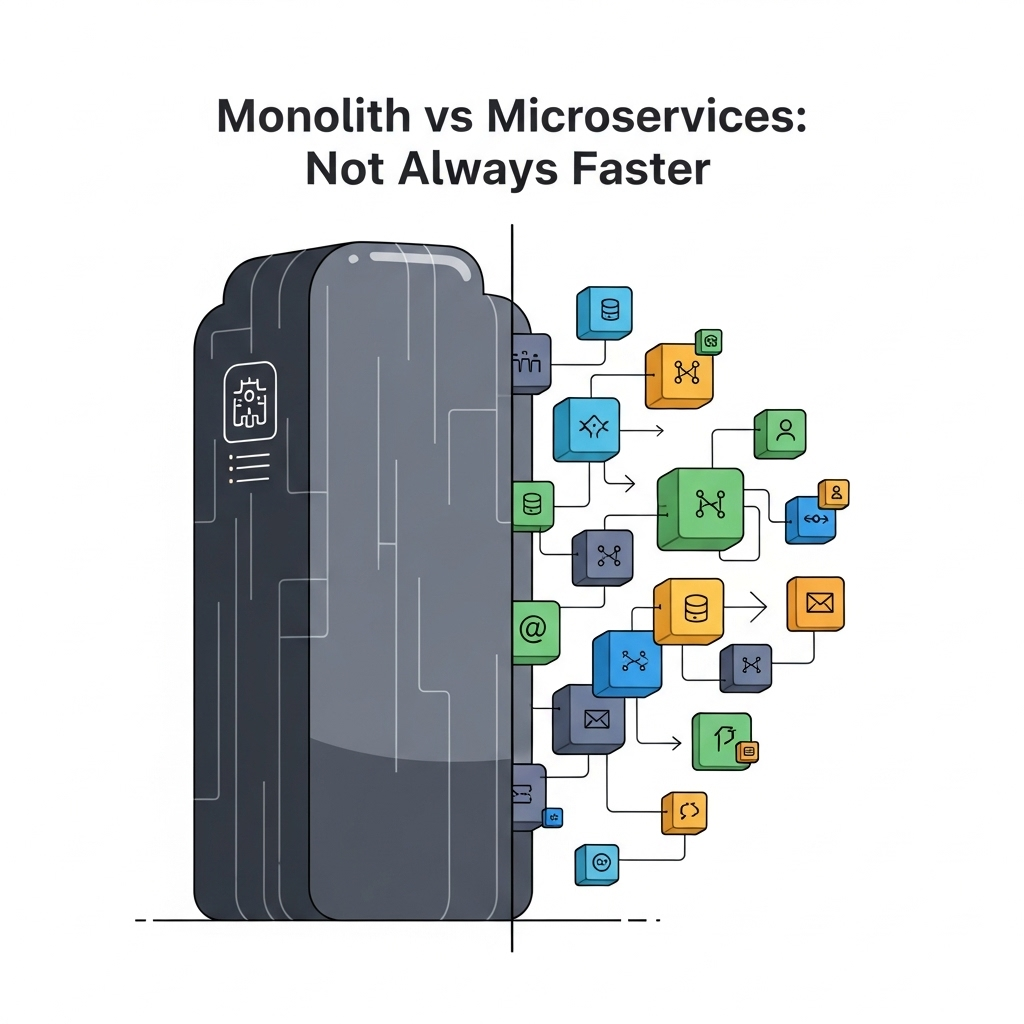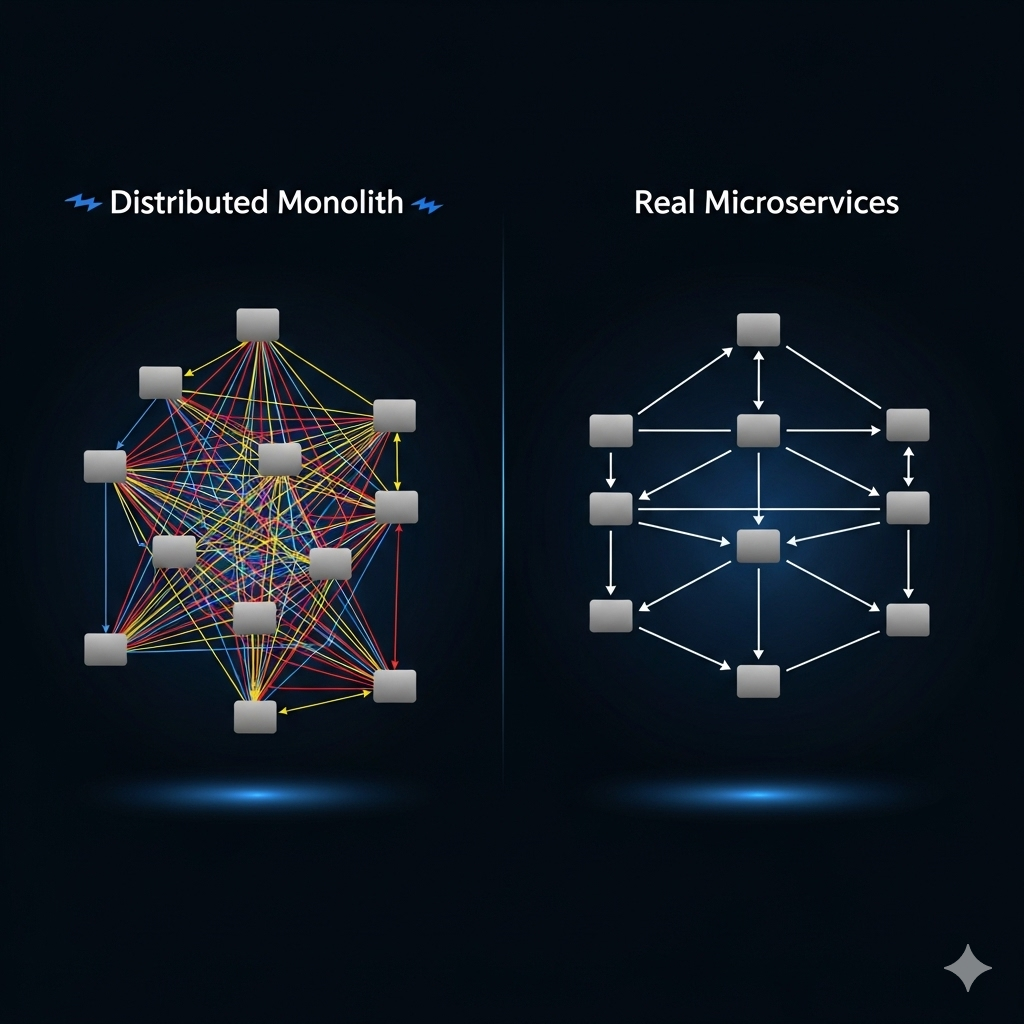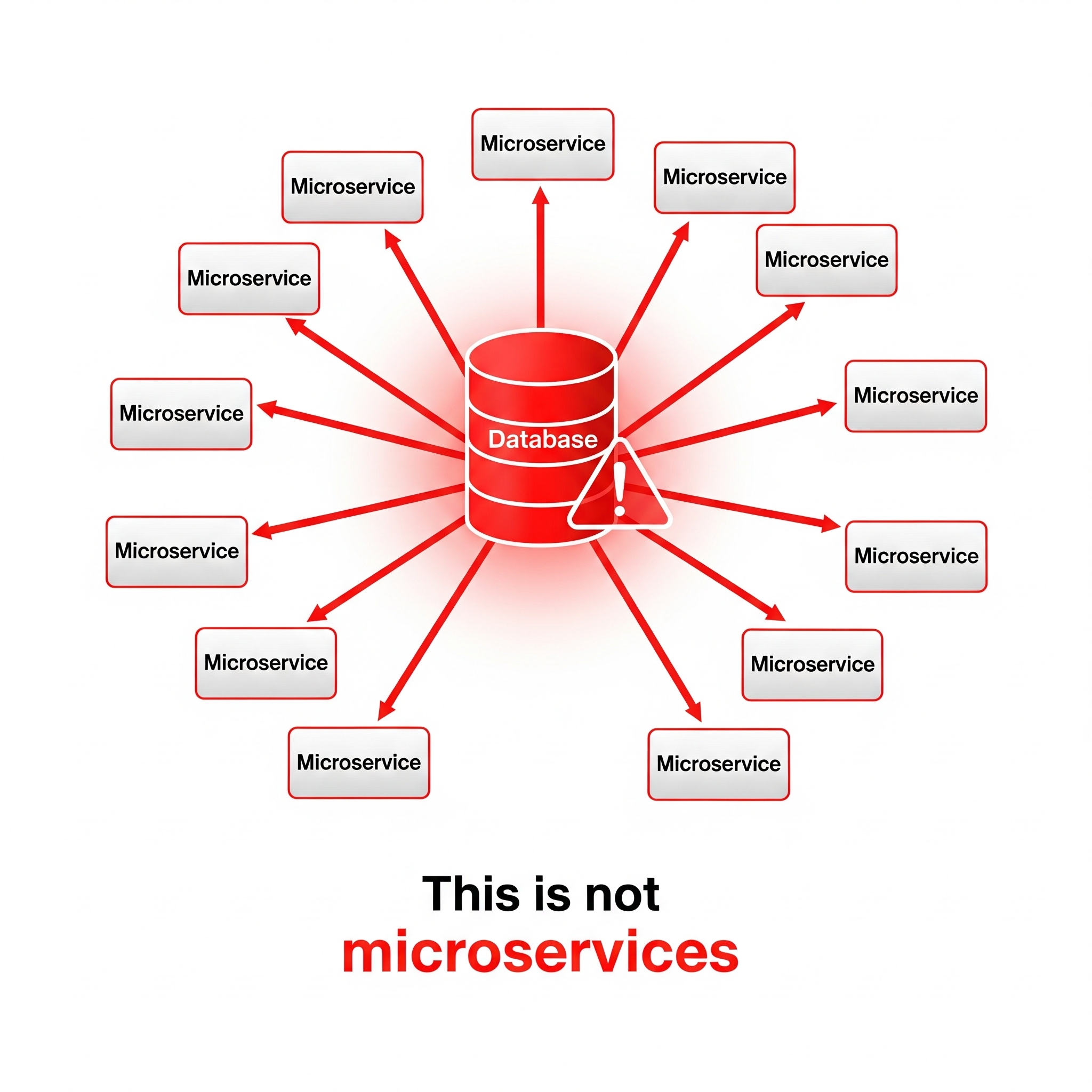Microservices Are Not Always Faster: Myths, Realities, and Lessons Learned

Introduction: The Microservices Illusion
For the past decade, microservices have been one of the most popular architectural trends in the software world. At conferences, in blog posts, and even at product launches, we keep hearing the same claims:
- “Microservices enable faster development.”
- “With microservices, everything performs better.”
- “Monoliths are outdated; microservices are the future.”
But is this really true?
The original purpose of microservices was not performance, but solving complex organizational problems and enabling scalability. Yet many developers and managers still believe that microservices automatically make systems faster. This article explores why that assumption is wrong and under which conditions microservices truly add value.

Where Does the “Microservices = Speed” Belief Come From?
Microservices were born not to improve performance, but to improve scalability and organizational efficiency.
- Teams can work independently on different services.
- Individual components can be deployed separately.
- Services can be scaled independently when needed.
However, none of these advantages mean “automatic speed.” In a monolithic system, a function call happens in memory. In microservices, that same call travels over the network (HTTP, gRPC). On top of that, serialization, authentication, service discovery, and load balancer overheads are added.
The Appeal of Microservices: Why Everyone Jumps In
There are strong reasons why microservices are attractive:
- Independent teams: One team can work on user management while another focuses on payments.
- Faster deployments: In a monolith, you must redeploy the entire app, while in microservices you only update the affected service.
- Technology freedom: One service can be written in Go, another in Python or Node.js.
- Scalability: Only the heavily used services can be scaled horizontally instead of the whole system.
All of this sounds great. But here’s the problem: none of these features directly guarantee better performance. In fact, if designed poorly, microservices can make your system slower.

Common Anti-Patterns in Microservices
Unfortunately, microservices are often adopted for the wrong reasons—sometimes simply because they are trendy. This leads to critical mistakes and slower systems. What you end up with is not real microservices, but rather a distributed monolith.
- The trend effect: Microservices are often chosen for the sake of looking modern rather than out of necessity. The complexity they introduce is overlooked.
- Synchronous dependencies: Instead of being independent, services are chained with synchronous calls. This increases latency rather than reducing it.
- Misuse of async tools: Kafka, for example, is integrated into systems, but the asynchronous mindset is ignored. I once saw an application where all communication happened through Kafka, but every service was built around a Request–Reply Pattern (RPC over Kafka). A service sent a message, then waited for a reply. Kafka was there, but there was no true asynchronous communication. In such cases, using gRPC or REST would have been far more meaningful. Kafka’s strengths—throughput and event-driven design—were completely wasted.
- Complex dependencies: In some projects, developers make services so interdependent that even the simplest task becomes a nightmare. I witnessed a case where generating a simple report took 15–30 minutes because services were chained together in long sequences. Imagine a user pressing one button, and behind the scenes dozens of services trigger each other until the result is finally produced minutes later. This level of complexity destroys the very flexibility microservices are supposed to bring.
- The single-database trap: One of the core principles of microservices is that each service should manage its own data. Yet, many implementations still connect every service to one massive database. This results in a distributed monolith rather than true microservices.
These practices break the core principles of microservices. Let’s be clear: they are anti-patterns. Systems that look like microservices but behave like monoliths bring neither performance nor flexibility—they only create fragile, hard-to-manage architectures.

Real Story: From Monolith to Microservices, and the Disappointment
We saw this very clearly in a client’s transformation journey. They had a large monolith with increasingly complex code, heavy and risky release cycles. Encouraged by their software vendor, they decided to move to microservices.
At first, expectations were high: “Everything will be so much faster!”
But once the project went live, the results were surprising:
- Average latency had tripled.
- Even simple operations required 5–6 chained service calls.
- Network traffic, security checks, and serialization/deserialization overhead had piled up.
- Debugging now required checking logs across 4–5 different services instead of just one.
The outcome: The codebase was cleaner, teams could work independently—but overall system performance was worse.
The Hidden Costs of Microservices
This is where the hidden costs of microservices become apparent. In a monolith, a function call in memory takes nanoseconds. In microservices, that same call takes milliseconds over HTTP or gRPC. What seems small at first quickly becomes a bottleneck when multiplied across chains of services.
And it’s not just about performance. If each service has its own database, data consistency becomes a challenge. Without embracing eventual consistency, complex transaction management is required. Another major issue is observability. Without proper monitoring, tracing, and centralized logging, finding the root cause of latency issues is like searching for a needle in a haystack.
Where Do Microservices Truly Add Value?
All these experiences prove one thing: the real value of microservices is not performance, but organizational flexibility. Instead of having a large team working on a single codebase, smaller independent teams can focus on separate services. This independence improves productivity and reduces risk.
Microservices also make partial scaling possible. For example, if the payment service experiences heavy traffic, only that service can be scaled, while the reporting module remains unchanged. This allows for far more efficient resource usage. Technology diversity is another advantage: one service can be in Go, another in Python, depending on what best fits the problem.
In short, microservices’ true benefit is organizational speed and flexibility. Performance gains, if any, are indirect.
How to Achieve Real Speed
For microservices to actually improve speed, certain conditions must be met. Service boundaries need to be drawn correctly—poorly defined boundaries only create unnecessary communication overhead.
The communication model is also critical. If everything is synchronous, cascading latency becomes inevitable. Adopting event-driven or asynchronous approaches helps avoid this. Caching and API gateway optimizations are also essential to reduce network costs.
And above all, observability is non-negotiable. Centralized logging, metrics, and distributed tracing are the only ways to see what is happening inside a distributed system. Without them, you are flying blind.
The bottom line: breaking a monolith alone does not make things faster. Without correct boundaries, a proper communication model, smart optimizations, and solid observability, microservices will slow you down, not speed you up.

Conclusion: Microservices Are a Tool, Not the Goal
“Not every nail needs a hammer; not every project needs microservices.”
Microservices are an important evolution in software architecture, but they must not be misunderstood. Treating them as a silver bullet for performance is a mistake. Adopted for the wrong reasons, they magnify the very problems you hoped to solve.
When chosen for the right reasons—team autonomy, flexibility, and scalability—they provide huge benefits in the long run. But remember: microservices are a tool for managing complexity, not an end in themselves.
Most importantly: Not every project should, or even can, adopt microservices. For small teams and simple applications, microservices add unnecessary overhead. Sometimes a well-designed monolith is faster to build, easier to maintain, and far more practical. Microservices should only be chosen when there is a real need, the right conditions are met, and the team is mature enough to handle the complexity they bring.